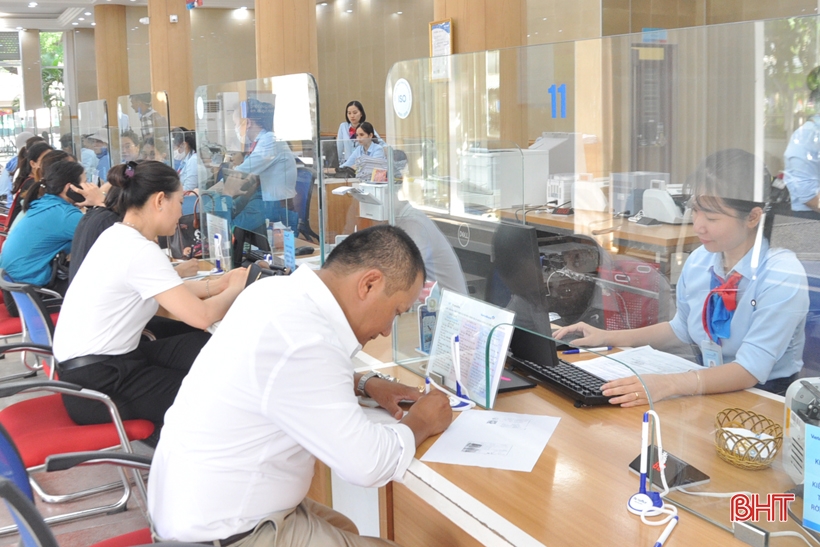Credit in the trade and service sector in Ha Tinh accounts for 64.5% of total outstanding debt in the province.
In addition to the agricultural - rural and industrial - construction sectors, Ha Tinh Banking sector has identified trade - services as a potential sector for debt issuance. Accordingly, in recent times, credit institutions in the area have focused on reforming administrative procedures, simplifying documents, creating conditions for many businesses, cooperatives and people operating in the trade - services sector to access loans.
Ha Tinh Banking sector focuses on reforming administrative procedures, creating conditions for businesses and people to access loans.
In addition, in the context that the business community, cooperatives and production and business households are facing many difficulties due to the impact of the economic recession such as: increased production costs, reduced orders, large inventories... the banking industry has proactively implemented solutions to reduce lending interest rates. Compared to the beginning of 2023, lending interest rates at banks have now decreased by about 2%/year. Thanks to that, it has contributed to increasing outstanding debt, especially in the trade and service sector.
Data from the State Bank of Vietnam (SBV) Ha Tinh Branch shows that as of July 20, 2023, outstanding loans in the trade and service sector of "banks" reached over VND 58,900 billion, an increase of about 3.9% compared to the end of 2022 and accounting for 64.5% of total outstanding loans in the whole area.
According to records, in addition to the "big 4" of Agribank, BIDV, VietinBank and Vietcombank, currently, the joint stock commercial banking sector is also increasing lending in this sector, contributing to promoting economic growth and development.
Outstanding debt in the trade and service sector of Ha Tinh accounts for 64.5% of total outstanding debt in the whole area.
From now until the end of the year, the State Bank of Vietnam, Ha Tinh Branch, will direct local commercial bank branches to continue directing credit to production and business sectors, priority sectors and economic growth drivers according to the Government's policy. In particular, banks will proactively implement solutions to prioritize capital sources for potential sectors such as trade and services.
Thao Hien
Source

































![[Photo] National Assembly Chairman Tran Thanh Man visits Vietnamese Heroic Mother Ta Thi Tran](https://vphoto.vietnam.vn/thumb/1200x675/vietnam/resource/IMAGE/2025/7/20/765c0bd057dd44ad83ab89fe0255b783)



































































Comment (0)